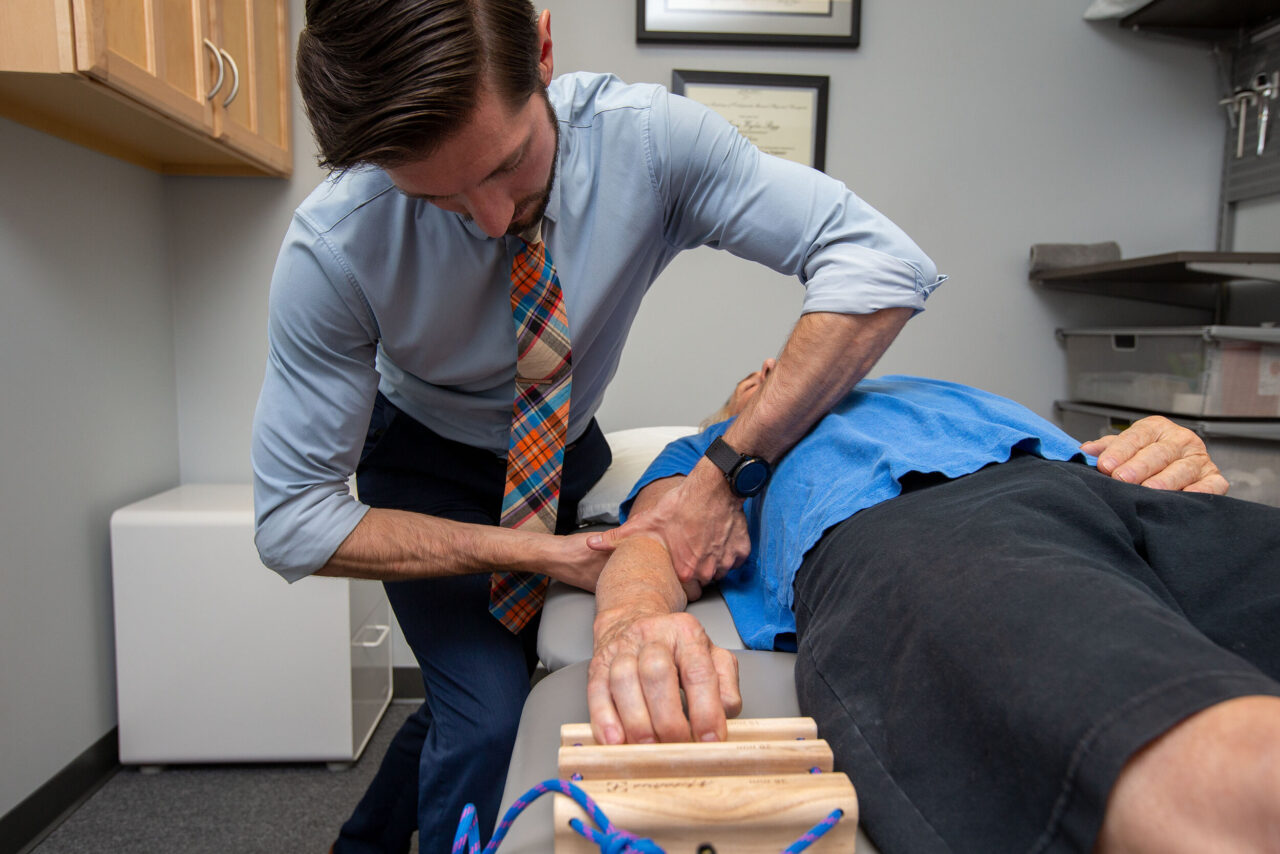Pain to the elbow is very common among climbers and is one of the leading causes of time away from the sport. The most likely areas of pain are to the lateral elbow or medial elbow. Keep reading to learn more about the symptoms, causes, and treatment options for elbow pain.
Medial epicondylalgia (also known as medial elbow pain, located on the inner portion of the elbow) can be caused by several underlying conditions, but is most commonly a localized tendinopathy of the flexor carpi radialis muscle or the pronator teres muscle. These muscle/tendons attach to the medial epicondyle of the humerus bone and are commonly aggravated by climbing or lifting activities. The function of these muscles is to stabilize the wrist and elbow while climbing. The muscle/tendon structure can get irritated by repetitive over-use, work duties that involve excessive or repeated gripping, muscle weakness, poor climbing mechanics, or forearm muscle imbalances. Over time, this can develop into tendinopathy which consists of degenerative changes to the muscle/tendon unit.
Climbers often have very strong finger flexors but lack strength in their wrist stabilizers. During high intensity climbing the demands on the wrist stabilizers can be too great for those muscles which can lead to degenerative changes and pain.
Common symptoms: aching or sharp pain to the inner portion of the elbow. Tenderness to the touch of the forearm muscles or the bone on the inside of the elbow. Symptoms are aggravated by rock climbing (especially small crimpers, slopers, and compression movements), lifting or holding heavy objects, fine motor tasks, repetitive gripping tasks, and can be constant throughout the day.
How it is treated: the current best evidence shows that medial epicondylalgia is treated with a combination of manual therapy and exercise therapy. Manual therapy may focus on elbow joint mobilization, soft tissue massage, or dry needling. Exercise therapy will likely consist of a progressive loading program of the painful muscle/tendon as well as stabilization exercises for the wrist and the shoulder. The progressive loading program is the key to promoting tissue regeneration and long term healing of the muscle/tendon. Depending on the severity, the exercise program will start with low-load exercises and progress to increasingly challenging loads to further promote tissue reorganization and strength.
If you are having elbow pain, schedule an appointment with the experts at Mend to get a proper diagnosis and evidence-based treatment plan.

